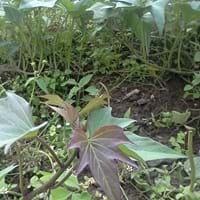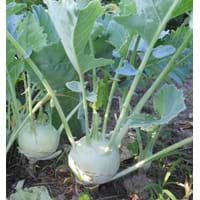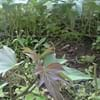Life Span
Annual and Perennial
Annual or Biennial
Type
Bulb or Corm or Tuber
Vegetable
Origin
Latin America and the Caribbean, Central America, Micronesia
Western Europe
Types
Hannah Yams, Japanese Sweet Potatoes
Not Available
Habitat
Cold Regions, Tropical regions
agricultural areas, gardens, Wet ground
USDA Hardiness Zone
11-12
1-6
Sunset Zone
21,22
A1, A2, A3, H1, H2, 1a, 1b, 2a, 2b, 3a, 3b, 4, 5, 6, 7, 8, 9, 10, 11, 12, 13, 14, 15, 16, 17, 18, 19, 20, 21, 22, 23, 24
Habit
Vining/Climbing
Upright/Erect
Minimum Width
Not Available
Flower Color
Not Available
Not Available
Flower Color Modifier
Bicolor
Bicolor
Fruit Color
Not Available
Not Available
Leaf Color in Spring
Green, Purple, Light Green, Chartreuse, Bronze
Green, Light Green
Leaf Color in Summer
Light Green
Green, Purple
Leaf Color in Fall
Several shades of Green
Green, Purple
Leaf Color in Winter
Light Green
Green, Purple
Leaf Shape
Heart-shaped
Oval
Plant Season
Spring, Summer, Fall, Winter
Not Available
Sunlight
Full Sun, Partial Sun
Full Sun, Partial Sun
Growth Rate
Very Fast
Fast
Type of Soil
Clay, Loam, Sand
Loam, Sand
The pH of Soil
Acidic, Neutral, Alkaline
Neutral
Soil Drainage
Well drained
Well drained
Bloom Time
Late Fall, Early Winter, Winter
Not Available
Tolerances
Drought
Drought
Where to Plant?
Ground, Pot
Container, Ground
How to Plant?
Stem Cutting, Tuber propagation
Seedlings
Plant Maintenance
Medium
Medium
Watering Requirements
Average Water Needs, Needs a lot of water initially
Keep ground moist, Use Mulches to help prevent water loss during hot and windy weather
In Summer
Lots of watering
Lots of watering
In Spring
Moderate
Moderate
In Winter
Average Water
Average Water
Soil pH
Acidic, Neutral, Alkaline
Neutral
Soil Type
Clay, Loam, Sand
Loam, Sand
Soil Drainage Capacity
Well drained
Well drained
Sun Exposure
Full Sun, Partial Sun
Full Sun, Partial Sun
Pruning
Remove damaged leaves, Remove dead branches, Remove dead leaves
No pruning needed in the early stages, Remove dead leaves
Fertilizers
All-Purpose Liquid Fertilizer
organic fertlizers, Potassium
Pests and Diseases
Aphids, Beetles, Leafminers, Red blotch
Alternaria Leaf Spot, Aphids, Cabbage looper, Downy mildew, Leaf spot, Mites, Red blotch
Plant Tolerance
Drought
Frost, Shallow soil
Flower Petal Number
Single
Single
Fragrant Bark/Stem
No
Yes
Foliage Texture
Coarse
Bold
Foliage Sheen
Matte
Matte
Attracts
Aphids, Beetles, Mites, white worms
Aphids, Beetles, Flying insects
Allergy
Abdominal pain, Skin rash, Swelling, Vomiting
Digestive Problems, sneezing, Swelling in the face
Aesthetic Uses
Not Used For Aesthetic Purpose
Not Used For Aesthetic Purpose
Beauty Benefits
Not Available
For treating wrinkles, Weightloss
Environmental Uses
Air purification
Food for animals, No fertilizer, pesticides, or herbicides needed
Medicinal Uses
Potassium, ß-carotene, Vitamin C
Anemia, Diabetes, Digestion problems, Increase fiber amount, Kidney Stones, Minerals, Weight loss
Part of Plant Used
Leaves, Root, Shoots
Leaves, Stem
Other Uses
Used As Food, Used for its medicinal properties
Can be made into a herbal tea, Used As Food, Used for its medicinal properties
Used As Indoor Plant
Yes
No
Used As Outdoor Plant
Yes
Yes
Garden Design
Container, Edible, Groundcover, Hanging Basket, Herb / Vegetable, Mixed Border, Vine
Edible, Herb / Vegetable
Botanical Name
IPOMOEA batatas
BRASSICA oleracea 'Dyna'( Gongylodes Group)
Common Name
Sweet Potato, Sweet Potato Vine
Kohlrabi
In German
Süßkartoffel
Kohlrabi
In French
Patate douce
Chou-rave
In Spanish
Batata
Brassica oleracea gongyloides
In Greek
Γλυκοπατάτα
Kohlrabi
In Portuguese
Batata doce
Kohlrabi
In Polish
Słodki ziemniak
Kalarepa
In Latin
Dulcis SOLANUM TUBEROSUM
Kohlrabi
Phylum
Magnoliophyta
Magnoliophyta
Class
Magnoliopsida
Magnoliopsida
Order
Solanales
Capparales
Family
Convolvulaceae
Brassicaceae
Clade
Angiosperms, Asterids, Eudicots
Not Available
Tribe
Not Available
Not Available
Subfamily
Not Available
Not Available
Number of Species
Not Available
Season and Care of Sweet Potato and Kohlrabi
Season and care of Sweet Potato and Kohlrabi is important to know. While considering everything about Sweet Potato and Kohlrabi Care, growing season is an essential factor. Sweet Potato season is Spring, Summer, Fall and Winter and Kohlrabi season is Spring, Summer, Fall and Winter. The type of soil for Sweet Potato is Clay, Loam, Sand and for Kohlrabi is Loam, Sand while the PH of soil for Sweet Potato is Acidic, Neutral, Alkaline and for Kohlrabi is Neutral.
Sweet Potato and Kohlrabi Physical Information
Sweet Potato and Kohlrabi physical information is very important for comparison. Sweet Potato height is 60.00 cm and width Not Available whereas Kohlrabi height is 30.50 cm and width 30.00 cm. The color specification of Sweet Potato and Kohlrabi are as follows:
Sweet Potato flower color: Not Available
Sweet Potato leaf color: Green, Purple, Light Green, Chartreuse and Bronze
Kohlrabi flower color: Not Available
- Kohlrabi leaf color: Green, Light Green
Care of Sweet Potato and Kohlrabi
Care of Sweet Potato and Kohlrabi include pruning, fertilizers, watering etc. Sweet Potato pruning is done Remove damaged leaves, Remove dead branches and Remove dead leaves and Kohlrabi pruning is done No pruning needed in the early stages and Remove dead leaves. In summer Sweet Potato needs Lots of watering and in winter, it needs Average Water. Whereas, in summer Kohlrabi needs Lots of watering and in winter, it needs Average Water.





